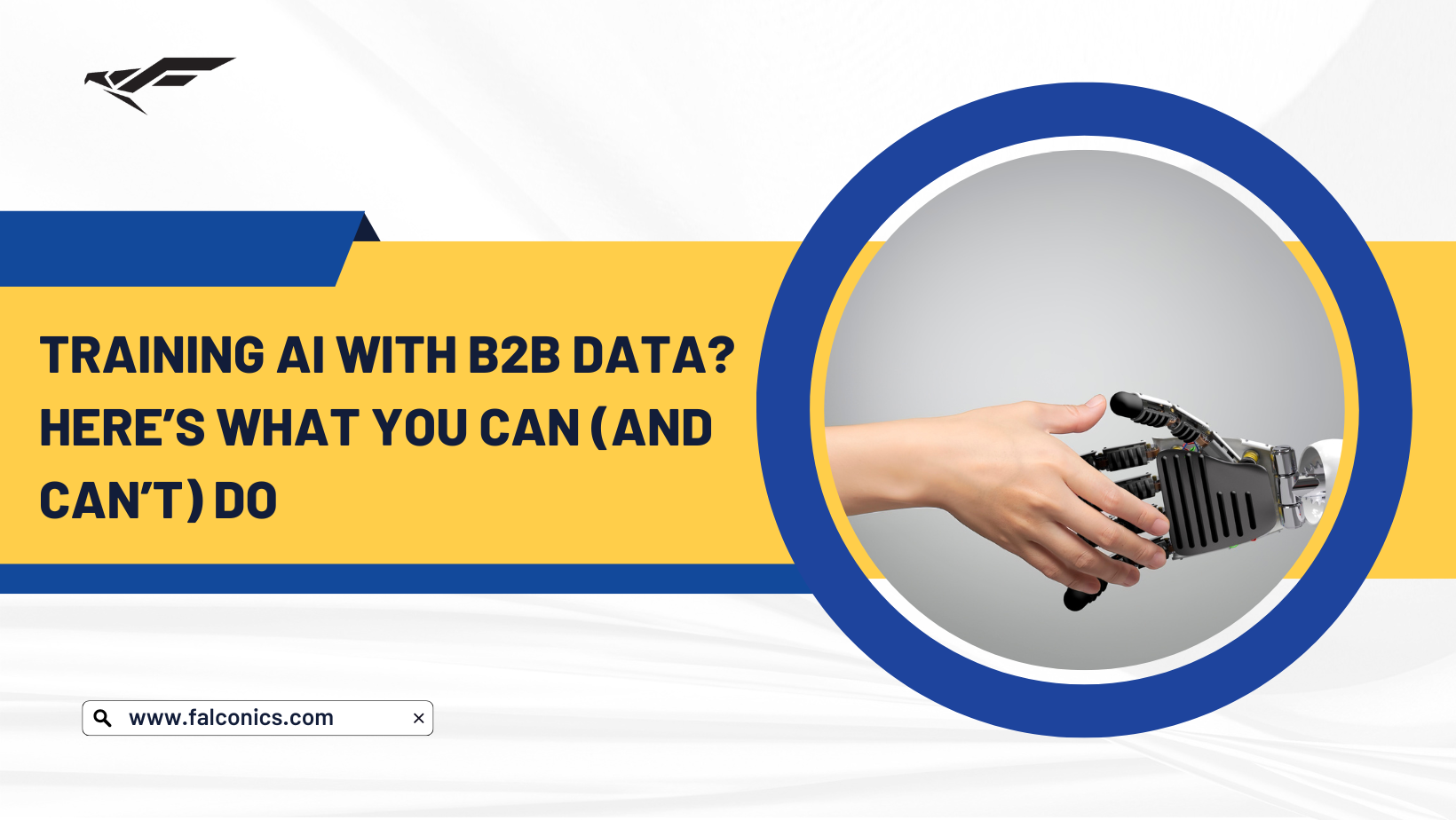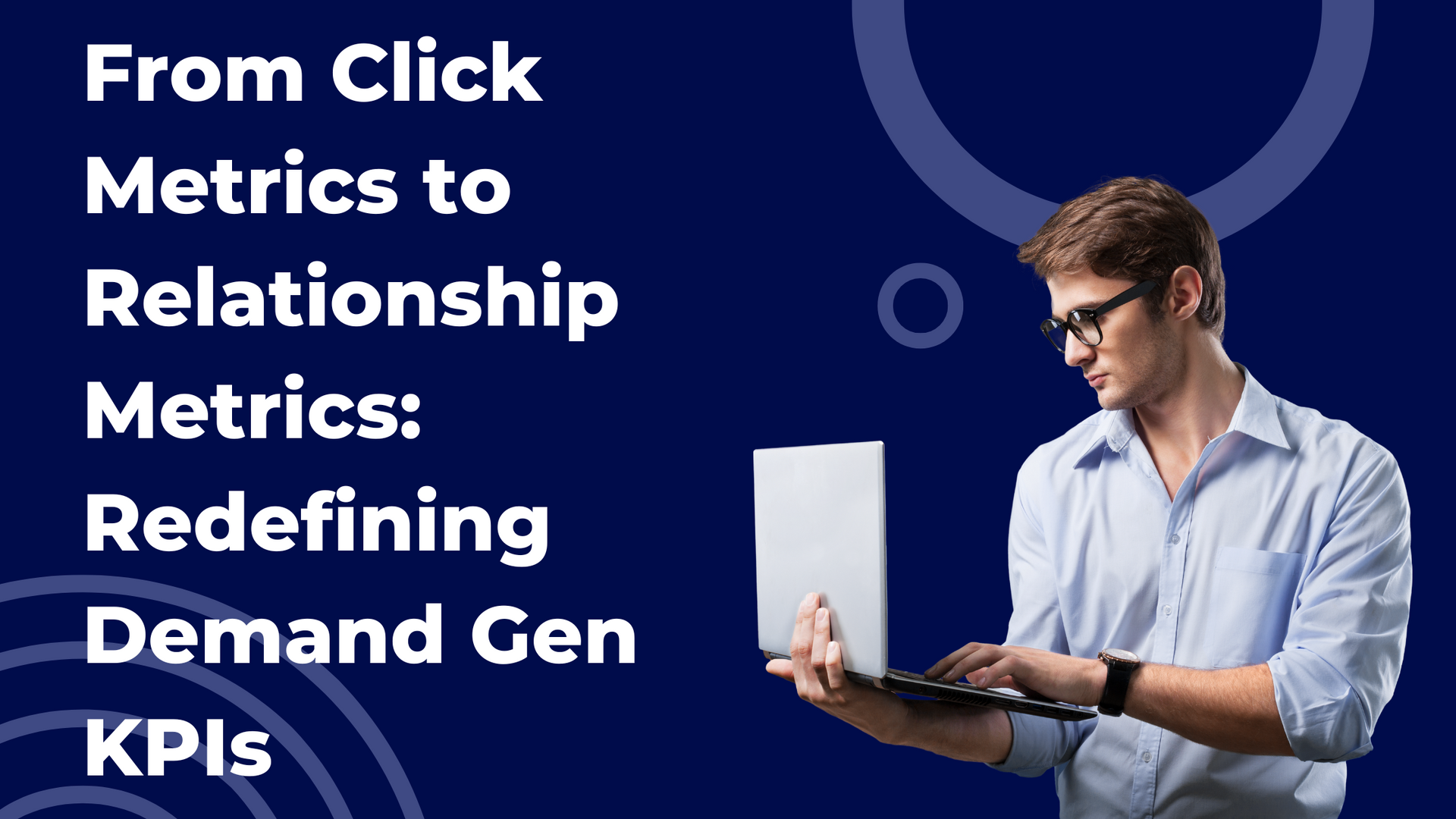Training AI with B2B Data? Here’s What You Can (and Can’t) Do
Why “owning” the data doesn’t mean you can use it freely in AI
Written By: Simran Bhatia

The Promise (and Problem) of B2B Data in AI
Everyone's racing to feed proprietary data into AI models — from internal sales logs to client feedback and enterprise reports. It sounds like a goldmine. But here’s the catch: just because your company has access to the data doesn’t mean you have the rights to use it for training AI.
It’s a trap many teams almost fall into — building promising prototypes, only to get stopped cold by legal. Why? Because when it comes to data licensing, consent, and ownership, things get murky fast.
What Does “Training AI” Even Mean Here?
Let’s define the scope.
Training AI with B2B data usually means feeding large volumes of structured or unstructured enterprise data (e.g., emails, contracts, usage logs, support chats) into machine learning models to improve performance or extract new insights.
But once that data starts modifying model weights or shaping outputs — you’ve entered legally sensitive territory. It’s no longer just analysis — it’s derivative use.
The Common Myth: If It’s Internal, It’s Safe
Here’s what many teams assume — and why that can backfire:
· Access = license. Just because your team can view or download the data doesn’t mean you can legally train a model on it.
· Anonymization solves everything. It helps — but if the model can memorize or recreate identifiable information, you’re still exposed.
· NDAs are enough. NDAs protect against leaks — not unauthorized transformation or reuse of the data for AI purposes.
Why It Matters: Real Consequences for Doing It Wrong
Training AI on data without proper rights can:
- Breach contracts or data sharing agreements
- Violate GDPR, CCPA, or HIPAA (depending on industry)
- Risk lawsuits over IP misuse — yes, even from your vendors or partners
- Poison your models with data you can’t commercially use
According to arecent Gartner report, 40% of AI projects will be delayed by legal review in 2025 due to data rights issues. You don’t want to be in that bucket.
So What Can You Do Instead? A Playbook
1. Audit your data sources.
Tag each dataset by ownership: internal, customer-owned, third-party licensed, or public.
2. Check licenses — don’t assume.
Even if a vendor shares data with you, the fine print may prohibit derivative use like training.
3. Separate training from fine-tuning.
Train foundation models on synthetic or licensed datasets; use customer-specific data only for inference or lightweight tuning if explicitly permitted.
4. Leverage retrieval-based models and federated learning.
RAG (Retrieval-Augmented Generation) and federated approaches can deliver value without direct training.
5. Build a consent layer.
Ensure employees, partners, and customers know how their data might be used — and agree to it.
Tools We Use to Stay Compliant
- OneTrust / BigID – Track data lineage and ownership
- SecureGPT / PrivateGPT – Prevent unintended leakage of sensitive info
- Legal Robot – Automatically flag restrictive terms in contracts
These tools help — but they don’t replace the need for human oversight and strong internal policy.
Mistakes We See All the Time
- Training models on chat logs or emails without user consent
- Feeding in third-party API data where licensing only allows display, not reuse
- Ignoring “right to be forgotten” requests — even after model training
- Failing to log or trace which data went into which version of your model
One team had to retrain an entire system after discovering a dataset used without proper clearance — deleting months of progress to avoid legal liability.
FAQs We Always Get
“What if we just keep the model internal?”
Still risky. Derivative use can trigger breach even if it's internal.
“Can we anonymize everything?”
Helps — but not a guarantee. An LLM that remembers specific phrasing can still leak.
“What about using public web data?”
Also gray. Just because it’s public doesn’t mean it’s free to use — scraping ≠ permission.
Where to Go from Here
In the era of AI, data governance isn’t a bottleneck — it’s the blueprint.
The most forward-thinking organizations will be the ones that treat data rights not as red tape, but as infrastructure. The ones who train models not just fast, but ethically — and whose systems can scale without fear of being ripped down later.
So before you ask, “Can we use this data?”, ask this instead:
“Can our future model withstand the legal scrutiny it hasn’t met yet?”
→ The AI you train today shapes the trust you build tomorrow. Make sure you build it right.




